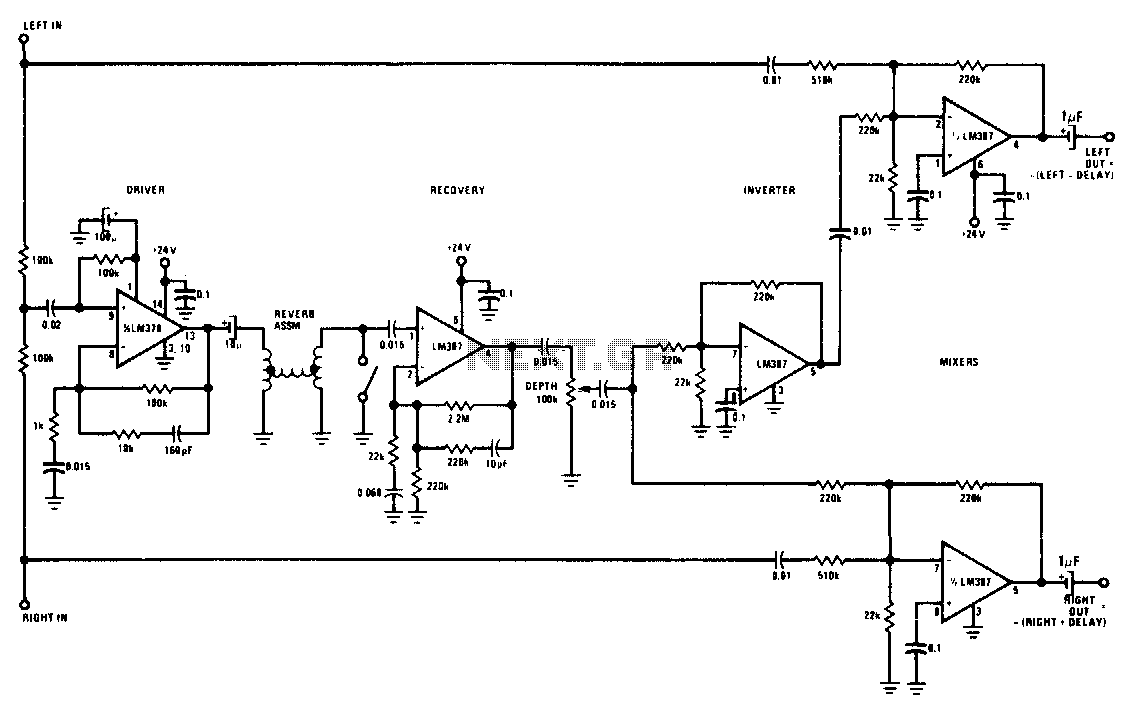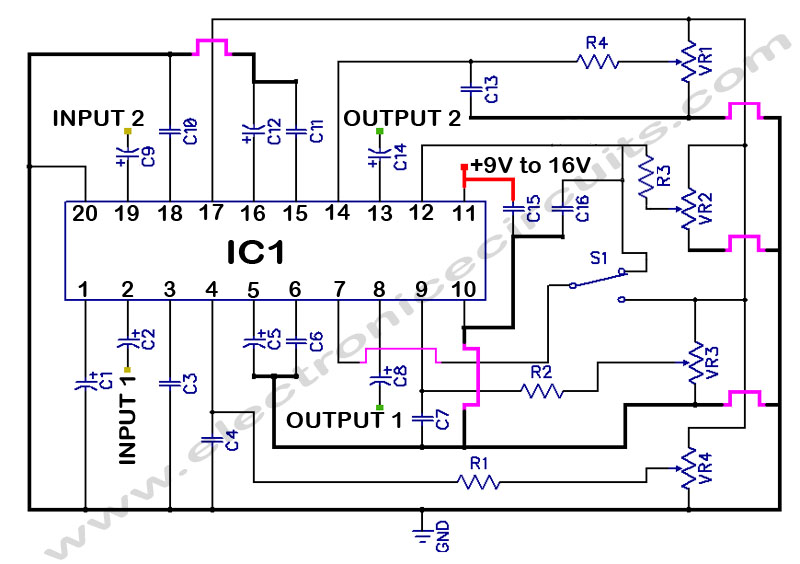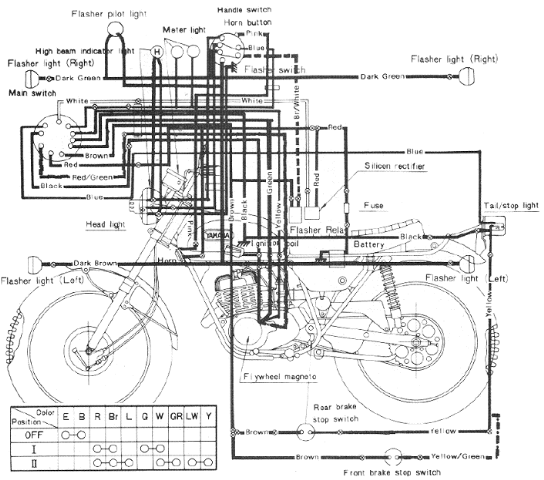
Stereo reverb enhancement system

The system can be used to synthesize a stereo effect from a monaural source such as AM radio or FM-mono broadcast. It can also be added to an existing stereo (or quad) system, where it produces an exciting "opening up" special effect that is truly impressive.
This system employs a signal processing technique to create a stereo effect from a single-channel audio input. The primary function is to enhance the auditory experience of listeners by simulating a stereo soundstage from monaural audio sources, such as AM radio or FM-mono broadcasts. The circuit utilizes various components, including operational amplifiers, filters, and delay lines, to manipulate the audio signal effectively.
The core of the circuit typically consists of a monaural input stage that receives the audio signal. This signal is then split into two separate channels, simulating the left and right audio outputs of a stereo system. To achieve the desired spatial effect, the circuit may employ phase shifting techniques, which involve altering the phase of one of the channels relative to the other. This phase manipulation creates the perception of depth and width in the soundstage, making it more immersive for the listener.
Additionally, the system may incorporate equalization circuits to adjust the frequency response of each channel, ensuring that both channels maintain a balanced sound profile. The use of delay lines can further enhance the stereo effect by introducing slight delays in one channel, mimicking the natural timing differences that occur when sound reaches each ear.
For integration with existing stereo or quad systems, the output of the circuit can be designed to connect seamlessly with standard audio inputs, allowing for easy incorporation into a broader audio setup. This versatility makes the system suitable for various applications, from home audio systems to professional sound reinforcement setups.
Overall, the implementation of this stereo synthesis system significantly enriches the listening experience by transforming monaural audio into a dynamic and engaging stereo sound environment.The system can be used to synthesize a stereo effect from a monaural source such as AM radio or FM-mono broadcast or it can be added to an existing stereo (or quad) system where it produces an exciting "opening up" special effect that is truly impressive.
This system employs a signal processing technique to create a stereo effect from a single-channel audio input. The primary function is to enhance the auditory experience of listeners by simulating a stereo soundstage from monaural audio sources, such as AM radio or FM-mono broadcasts. The circuit utilizes various components, including operational amplifiers, filters, and delay lines, to manipulate the audio signal effectively.
The core of the circuit typically consists of a monaural input stage that receives the audio signal. This signal is then split into two separate channels, simulating the left and right audio outputs of a stereo system. To achieve the desired spatial effect, the circuit may employ phase shifting techniques, which involve altering the phase of one of the channels relative to the other. This phase manipulation creates the perception of depth and width in the soundstage, making it more immersive for the listener.
Additionally, the system may incorporate equalization circuits to adjust the frequency response of each channel, ensuring that both channels maintain a balanced sound profile. The use of delay lines can further enhance the stereo effect by introducing slight delays in one channel, mimicking the natural timing differences that occur when sound reaches each ear.
For integration with existing stereo or quad systems, the output of the circuit can be designed to connect seamlessly with standard audio inputs, allowing for easy incorporation into a broader audio setup. This versatility makes the system suitable for various applications, from home audio systems to professional sound reinforcement setups.
Overall, the implementation of this stereo synthesis system significantly enriches the listening experience by transforming monaural audio into a dynamic and engaging stereo sound environment.The system can be used to synthesize a stereo effect from a monaural source such as AM radio or FM-mono broadcast or it can be added to an existing stereo (or quad) system where it produces an exciting "opening up" special effect that is truly impressive.





